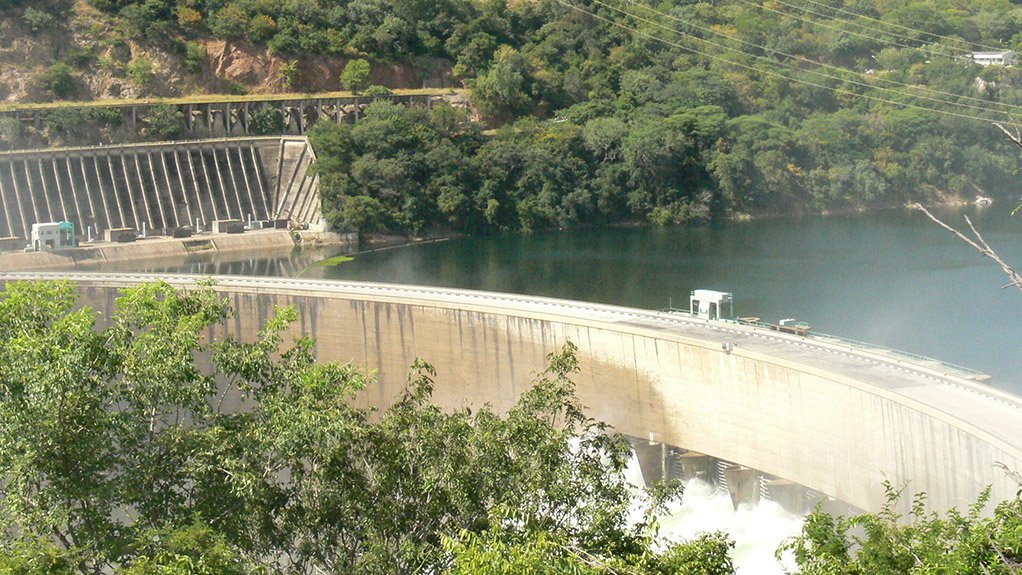With the rainy season on the horizon, the panic level among-millions of Mozambicans is rising by the day in fear of a growing possibility of the collapse of the ageing Kariba Dam wall.
The collapse of the decades-old wall would send billions of tonnes of water rushing downstream and on to defenceless communities.
The gigantic structure, which stands 128 metres tall and 579 metres wide and is a key feature in the world’s largest man-made lake and water reservoir, has been operational for more than 50 years.
Time has taken its toll on the landmark, with its concrete walls swelling due to slow chemical reactions, which is impeding the passage of water through the floodgates.
There have been warnings that the failure to rehabilitate the wall would pose a risk to the lives of some 3.5-million people downstream in the two countries in which the dam is located – Zimbabwe and Zambia – as well as Malawi and Mozambique further downstream. The loss of a key source of electricity for Zambia and Zimbabwe pales into insignificance when the prospect of the possible loss of life is taken into account. Wildlife and flora would also suffer potentially devastating losses.
Mozambique, already among the most flood-prone countries on the African continent, is said to be at greatest risk, hence the anxiety among villagers living along the Zambezi River, the fourth longest river in Africa at more than 2 500 kilometres and the largest African river flowing into the Indian Ocean.
“Whenever we hear the news about this looming disaster, we lose sleep,” a distressed Maria Manjate, a villager in Tete, Mozambique, said.
“Our fears are justifiable because the water will come to wipe us all here. As such, we urgently appeal to the Mozambican government to liaise with its counterparts for Zimbabwe and Zambia to resolve or avert this looming catastrophe,” the mother of three added.
A local farmer, Shalate Macchave, was equally terrified. “The thought of losing life to water is scary. I beg the countries involved to act fast,” she said.
Munyaradzi Munodawafa, spokesperson for the Zambezi River Authority (ZRA), which manages the facility, said Zambia and Zimbabwe had raised about $294.2-million with international investors, out of the $300-million required to fix deformities and cracks discovered in a series of assessments of the structure.
“We really understand the urgency in which the work should start. Such work will commence soon, hopefully in January 2016,” Munodawafa said in a telephonic interview from Zambia.
There are widespread fears that that may be too late.
“The rainy season, when floods are a recurrent feature, is upon us and carrying out rehabilitation works during the rainy season, as suggested by the officials, is not feasible,” said Beira-based socio-economic commentator, Sofia Pelembe, who painted a gory picture of how such a disaster would unfold.
“When the Kariba Dam walls collapses, it would unleash a tsunami of water through the Zambezi Valley, reaching the Mozambique border in less than a few hours, where it would engulf Mozambique’s Cahora Bassa Dam wall,” she said.
Kariba Dam lies some 1 300 kilometers upstream from the Indian Ocean, along the border between Zambia and Zimbabwe.
Queen Elizabeth II officially opened the Kariba Dam with the switching on of the first electricity generators in 1959. The dam was constructed between 1956 and 1960, creating the largest manmade lake in the world.
At the time of its construction, the Kariba Dam was known as “one of the engineering wonders of the world”, a double-curvature, concrete-arch, dam wall standing 128 metres above the river bed and spanning almost 600 metres across the Kariba gorge in the mighty Zambezi.
The building of the dam wall created an “inland sea” stretching 280 km in length, covering an area of more than 5 500 km2 and holding back more than 180-billion tonnes of water.
Nonetheless, talk of a disaster has been brewing in recent years. In 2008, it was reported that heavy rain might lead to a release of water from the dam which would force 50 000 people downstream to evacuate.
Rising water levels led to the opening of the floodgates in 2010, requiring the evacuation of more than 130 000 people who lived in the floodplain, and causing concerns that flooding might spread to nearby areas.
Last year, at a conference ZRA organised, engineers warned that the foundations of the dam had weakened and there was a possibility of dam failure unless repairs were made.
It was pointed out that the dam was in a dangerous state, despite having been built on a seemingly solid bed of basalt. Over the years, torrents from the spillway have eroded that bedrock, carving a vast crater that has undercut the dam’s foundations
EMAIL THIS ARTICLE SAVE THIS ARTICLE
To subscribe email subscriptions@creamermedia.co.za or click here
To advertise email advertising@creamermedia.co.za or click here











